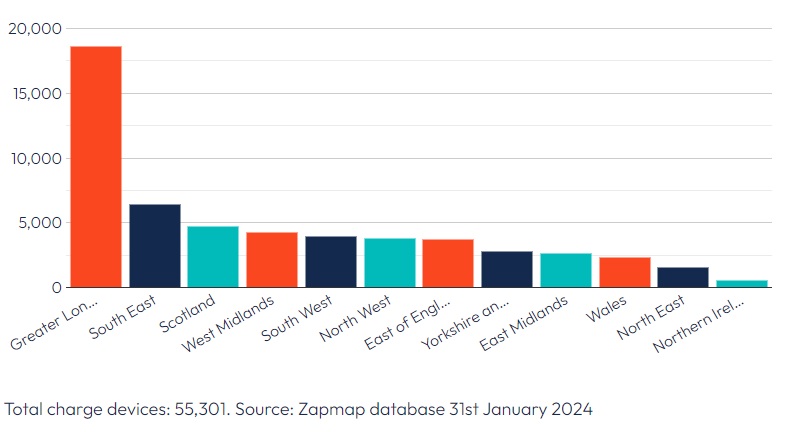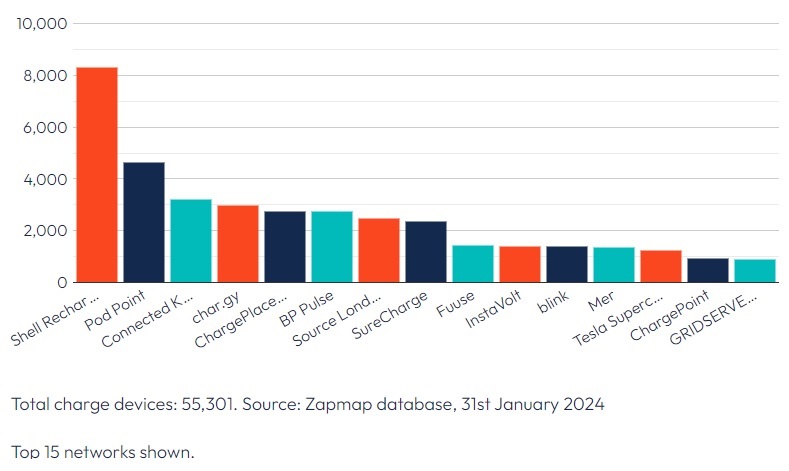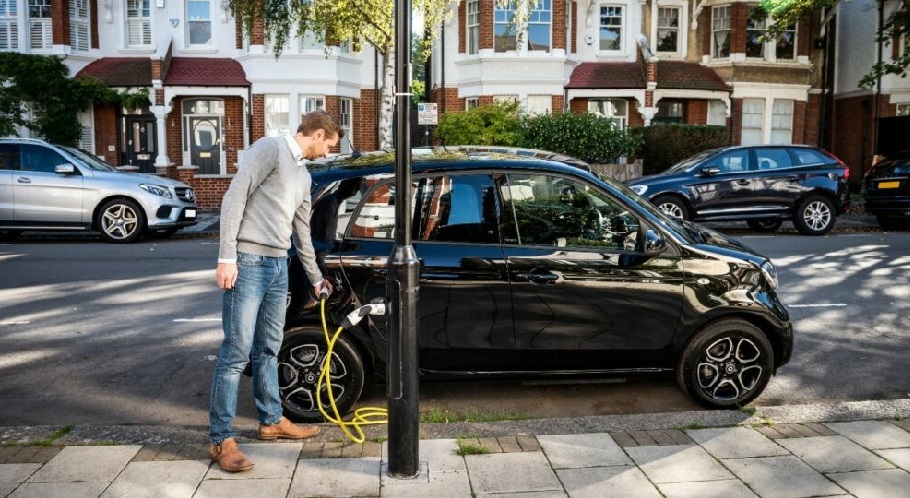Currently, the United Kingdom (UK) has just over 55,301 charging points, spread across 31,445 locations.
While these numbers represent significant growth, industry experts believe this quantity is insufficient to meet the demand from electric vehicle (EV) users.
In a dialogue with Mobility Portal Europe, Asif Ghafoor, CEO at Be.EV, further explains that “charging points are also not consistent, as London has more than any other place.”
Indeed, Greater London boasts 18,628 points, accounting for 33.7 per cent of the total.
This creates an imbalance with other areas and hinders users’ travel in their zero-emission cars.
Following the capital, the Southeast has 6,381, Scotland has 4,696, West Midlands has 4,252, and the South West has 3,917.
Then, the North West has 3,763, East of England has 3,709, Yorkshire and Humber has 2,975, East Midlands has 2,613, Wales has 2,329, North East has 1,517, and Northern Ireland has 508.

To enhance user experience, Be.EV offers a membership program where clients access lower rates.
“This program consults people on where they want chargers located, how they want to use them, and how to charge because there isn’t a fixed answer today on how many units we’ll need in the future,” Asif comments.
Which companies lead the installation of charging points in the UK?
According to Zapmap, by the end of January 2024, there were reported 55,301 electric vehicle charging points across the territory, spread across 31,445 locations. Of the total, 32,303 are slow, 12,457 fast, 6,480 rapid, and 4,061 ultra-rapid.
In this regard, since January 2023, 17,450 more devices were added to the UK’s network, representing a 46 per cent growth.
It is even worth noting that during last month, 1,436 new charging points were added to Zapmap’s database, of which 246 are slow, 822 fast, 142 rapid, and 226 ultra-rapid.
Regarding charging networks, the largest of these belongs to Shell Recharge – Ubitricity, with 8,295 units.
They are followed by Pod Point with 4,614 devices mainly found in car parks, and Connected Kerb with 3,194 traditional public chargers.
Behind them are char.gy with 2,792, ChargePlace Scotland with 2,754, BP Pulse with 2,739, Source London with 2,467, SureCharge with 2,345, Fuuse with 1,412, InstaVolt with 1,408, blink with 1,374, Mer with 1,357.
Also, Tesla Supercharger with 1,243, ChargePoint with 931, and GRIDSERVE Electric Highway with 904.

It is worth mentioning that the network with the fastest and ultra-fast charging points is InstaVolt, which currently has 1402 units.
They are followed by Tesla with 1,243 units, BP Pulse with 1,174, Osprey with 837, GRIDSERVE Electric Highway with 741, Genie Point with 630, MFG EV Power with 616, and ChargePlace Scotland with 553.
How does the UK drive the charging sector forward?
On February 5th, new measures were launched to support electric vehicle drivers under the government’s Drivers’ Plan, which includes grants for schools, cash for councils, and new proposals to increase the number of charging points.
The grant provides up to 75 per cent of the cost of purchasing and installing charging points, up to 2,500 pounds per socket, compared to the previous 350 pounds.
Funded by the Department of Transport, the grant is part of the Workplace Charging Scheme and is available to state-funded schools, colleges, nurseries, and academies to enhance charging facilities for staff and visitors.
The government is also delivering the 381 million pounds Local Electric Vehicle Infrastructure (LEVI) Fund to local authorities across the country.
The first capital payments for charging projects have been approved to three local authorities from East Sussex to North Yorkshire, and two London boroughs, bringing the total funding for these areas to more than 14.2 million pounds.







